Many businesses are struggling to cope with the unprecedented situation of COVID-19 and are looking at introducing automated processes to the way in which they serve their customers. As many businesses were unprepared for the enforcement of working from home it’s difficult to keep employees safe, deal with additional call volumes, and manage uncertainty right in a fully remote environment. Without access to essential tools, some tasks have become manual and time-consuming, and this is having an impact on the level of service brands are able to provide. One of the top tips to manage this environment is by leveraging automation. This isn’t about robots taking over- it’s about supporting call centre staff and empowering them to be able to help more people, more effectively. Automated processes are not only useful whilst the world tries to manage the effects of the virus, but they will also help businesses improve their customer satisfaction and increase revenue for the long-term. How can you get started?
Reflect on your company
Take a moment to consider your company from an outsider’s perspective. There are often low-hanging fruit, and in times like these it can be difficult to see them clearly. Imagine you were a customer with a problem and walk through the steps- what can you do to increase customer satisfaction? Below are some ideas of how you can improve your self-service, automation and the experience customers have when interacting with your brand. We’ve also included some examples of what companies are doing right now to provide great self-service experiences and reduce pressure on staff.
1. Reduce call volumes with a knowledge base or FAQ page
If your business is operating with a limited customer service team, the last thing you want is for your team to have to deal with a high volume of queries that could be easily answered by a FAQ page. Many clients will want to know how your business is operating during the pandemic, and rather than having to answer this question repeatedly, your customers should be able to find the answer automatically online through an updated FAQ page. You can quickly spin up a landing page on your website, or an app with something like Salesforce’s Heroku platform, to direct customers to. Create a banner across the top of your website, or update the responses given by your customer service bot to filter out calls with the most commonly asked questions.
You could quickly survey your service team and ask them to note down the most commonly asked questions. Record one of the calls, and use that information to write the answer for your FAQ page. Better yet, repurpose physical location staff to write these answers using their in-depth customer knowledge.
Here’s a great example of this from retail brand Asos. They’ve positioned their FAQ at the very top of their homepage, and then broken the FAQ down into multiple sections, a search box, and positioned the ‘contact us’ at the very bottom of the page to reduce the number of inbound enquiries they receive.
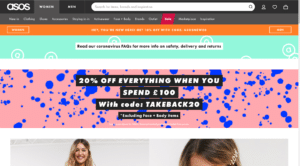
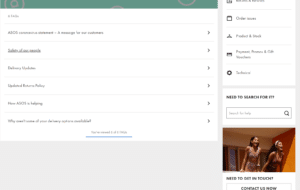
2. Create guided processes
Create walkthroughs and guided processes on your customer portal that will allow customers to complete actions such as cancelling their order, or re-routing their delivery. This will help the workflow of your customer service team, as customers will be able to self-serve rather than depending on one of your sales reps. By following automated guided processes, clients will be able to increase their orders and make repeat orders with ease, increasing your incremental net revenue. An example of this is Vodafone’s ‘Myvodafone’ portal. Customers are able to easily choose to add on data packages, upgrade their phone and migrate their number without speaking to a member of staff. We see this often when working on Salesforce Service Cloud projects- a well connected back-end means that your CRM can ‘talk’ to Service Cloud, giving a full picture of the customer across multiple channels. Customers like to self-service where possible, so guiding them through some of the common processes can be a great way to automate part of your business.
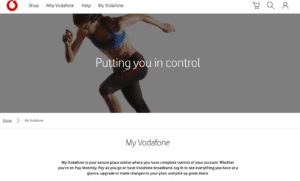
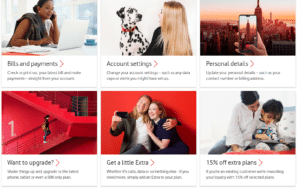
3. Create an omnichannel approach
In today’s digital world, customers have numerous platforms to choose from to try and contact your customer service team. For example, they may call your company, send an email or leave a message on one of your social media profiles. It is very easy, therefore, for an urgent message from a customer to be missed. Adapting to an automated omnichannel structure will ensure all messages you receive from customers are filtered into one channel and can be more easily managed and organised. This is where a solution like Salesforce Service Cloud can come in- creating one record for every customer, despite how many channels, email addresses and methods they use to interact with your brand. At Trigg, we find ourselves talking to lots of companies that struggle to connect their experiences with customers across channels. The more data that can be connected, the faster the resolution time, and this means happy customers and opportunities to upsell for more revenue.
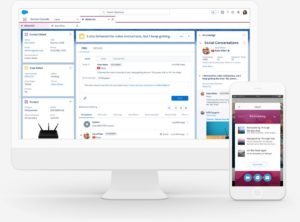
4. Focus on automated user experience solutions
Focus on the needs of your customer, and map their journey on your website. For example, you may wish to add a chatbot to your website with an automated message explaining how your business is currently operating, to prevent users from having to search your website for information and manually click on your contact page. Here’s an example from Estee Lauder showing you can not only use chatbots to reduce call volume, but also to creatively delight customers. Customers can try on lipstick with augmented reality!
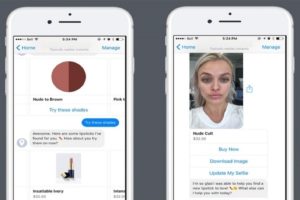
5. Skill-based routing
Instead of blindly assigning a customer service rep to a customer, and then making the customer wait as they are passed between departments, skill-based automated routing will help connect a customer with the most suitable department/rep. This could be achieved by asking a customer to submit keywords about their query. Salesforce explain this much better than we can in this help article, but basically, assign your reps scores between 1-10 for different attributes, such as the languages they speak or the tasks they’re most trained in, and use word recognition to route support cases.

(Still from a video by someone in the Trailblazer Community)
6. Entitlements
Entitlements can be used to track what type of customer service a user should receive. For example, you could consider using automated entitlements to track existing customers and prioritise their queries over new, potential customers. Here’s a great trailhead module on it- but basically if you want to have different rules or SLAs for different scenarios, entitlements can help you make your service team more efficient. Sometimes it helps to have a third party walk through this strategy with you- there are many different ways to increase incremental revenue and customer satisfaction through SLA and routing rules.
7. Milestones and escalation rules
You may wish to include automated milestones on your digital platforms, for example, you may wish only to provide your customer service telephone number and escalate your services once an individual has reached and read the milestone of your FAQ page. Again, something like this needs to be done with care and by mapping out your customer experience to avoid frustration.
Contact Trigg Digital
If you are interested in implementing any of the above automated processes into your business, we can help. We’re experts in Salesforce Service Cloud, as well as improving productivity, helping you save time and increase revenue for the long term.
- Documill and Trigg announce strategic partnership to simplify the complexity of document management - February 13, 2025
- #TriggThoughtLeaders – Retail Media Deep Dive with Chris Quinn, Co-founder, ProOps Consulting - February 4, 2025
- Agents vs Traditional Chatbots : The Great Christmas Debate 🎅🎄 - December 23, 2024



